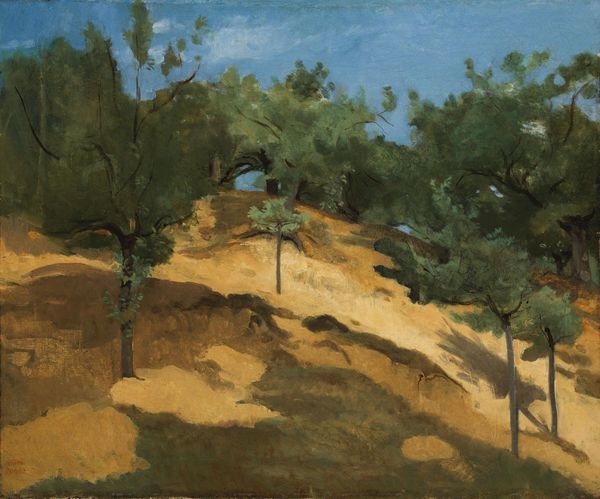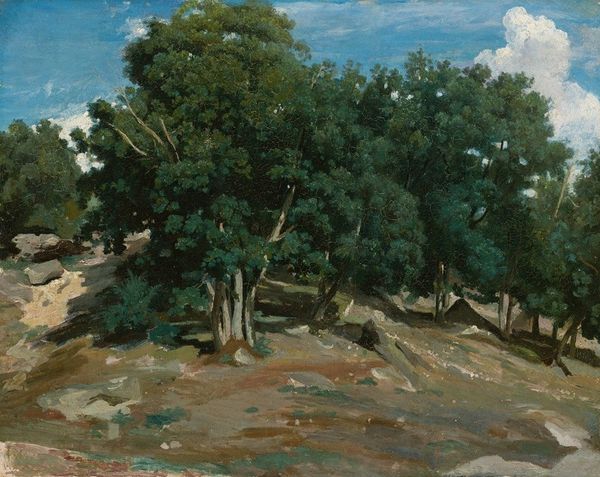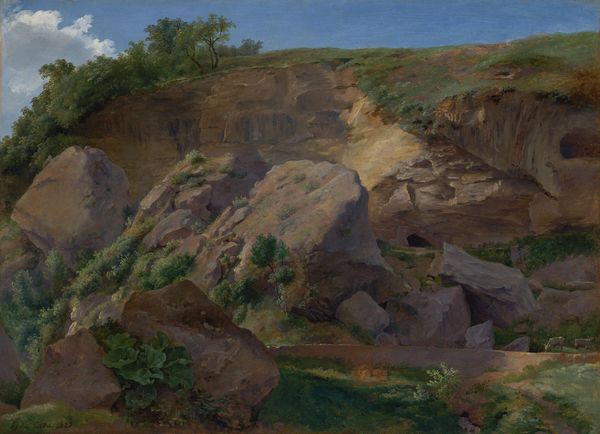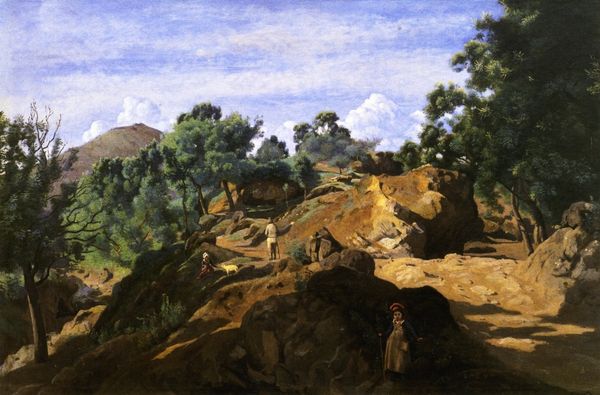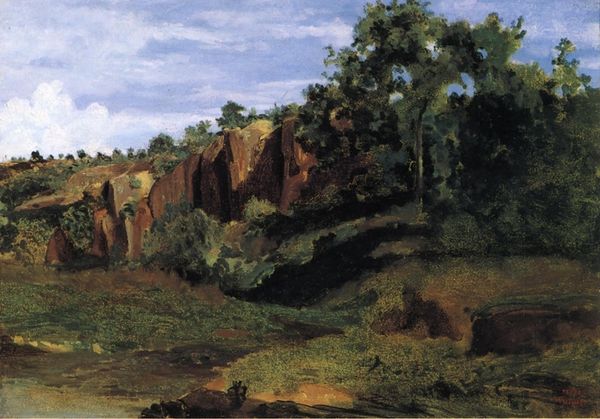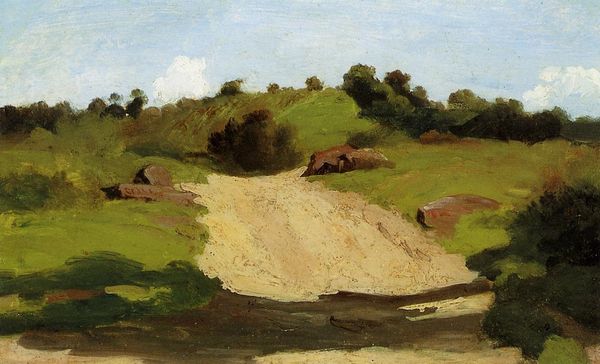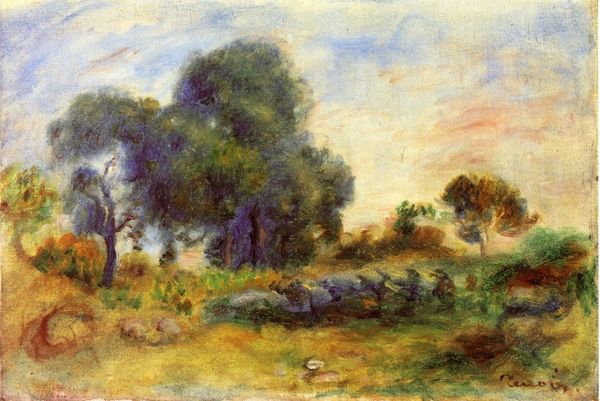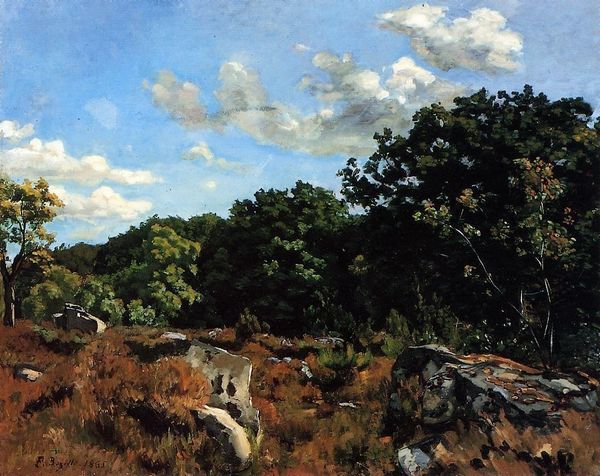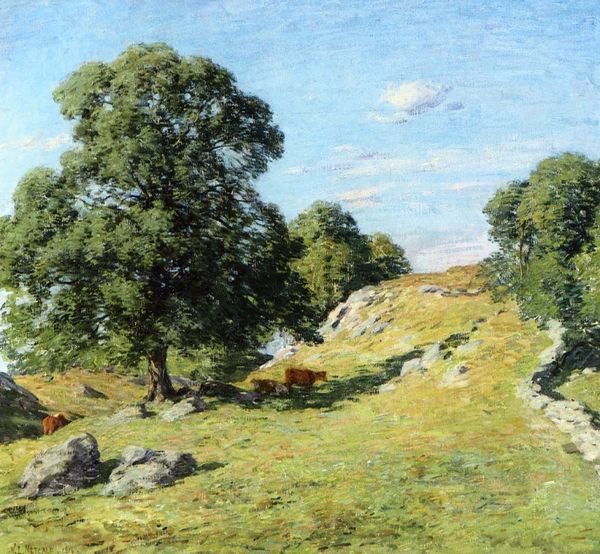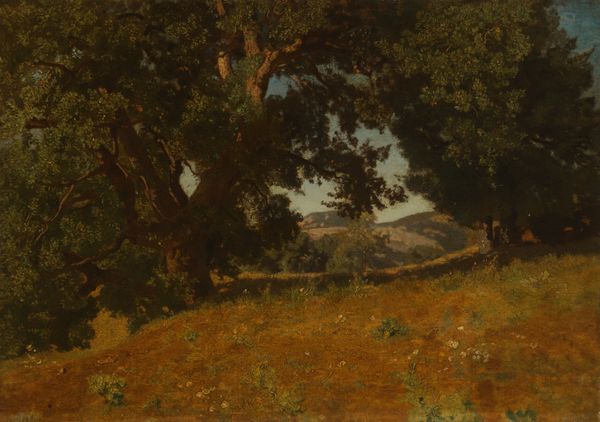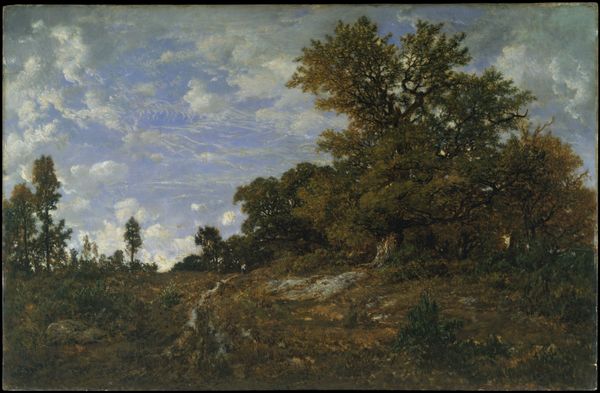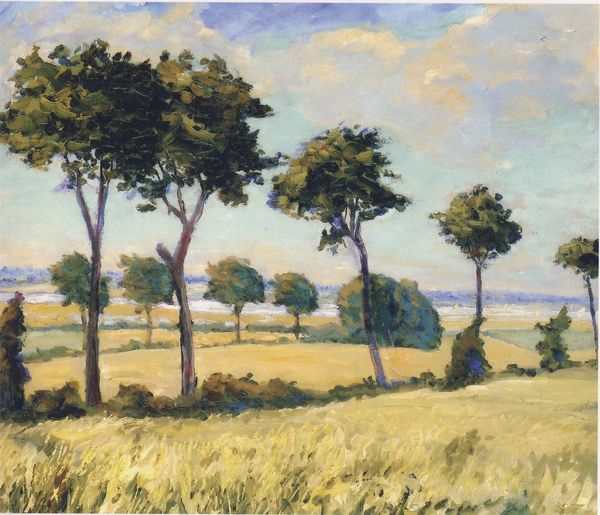
plein-air, oil-paint
#
plein-air
#
oil-paint
#
landscape
#
oil painting
#
romanticism
Dimensions: 30 x 44 cm
Copyright: Public domain
Curator: This is Camille Corot’s “Trees and Rocks at La Serpentara,” an oil painting rendered en plein-air in 1827. What are your initial thoughts? Editor: It strikes me as an extremely calm, perhaps even somewhat melancholic landscape. The relatively muted palette reinforces that feeling. The composition is interesting, though, a strong diagonal movement rising up the rocky incline, almost theatrical in its construction. Curator: Indeed, Corot's strategic use of light and shadow, notice the contrasts across the rough surfaces, animates what might otherwise be a rather static composition. And this manipulation creates dynamic interplay between forms. Semiotically speaking, the layering suggests hidden narratives, secrets held within the land. Editor: It’s fascinating to consider this in relation to the development of Romanticism. How do these scenes tap into an emerging public sentiment for nature? We should also keep in mind that Corot exhibited regularly at the Salon. It seems he understood the politics of imagery, presenting seemingly straightforward nature scenes with underlying nationalistic sentiment. Curator: That’s a shrewd observation. The artist seems to invite introspection via subtle formal cues, creating a balance between representational accuracy and evocative mood. The loose brushwork of the foliage almost anticipates impressionism, though he retains a foundational structure. Editor: It’s worth noting the historical context, however. The artistic merit of landscape painting was rising, aligning with the interests of a specific social class seeking leisure outside urban centers. The pastoral scenes validated an idealized version of a new economy of labor, even if those idyllic scenes often belied the real work of rural life. Curator: Absolutely. When we scrutinize his work—observing how color temperature interacts with the overall compositional balance, as well as the layering of paint that lends an ethereal quality—we unearth subtle nuances. Editor: The tension lies precisely there, between idealized escape and grounded reality. Analyzing the reception of Corot’s landscapes during his lifetime unveils complex societal values about nature and labor. What we consider 'landscape art' now, fulfilled vital ideological functions back then. Curator: Well, regardless, this work offers endless fodder for discourse, don't you agree? It is simultaneously simplistic in its representation and endlessly complex in its potential analysis. Editor: Yes, it gives us insight into understanding both the artistry and its broader socio-cultural significance in that period of art history.
Comments
No comments
Be the first to comment and join the conversation on the ultimate creative platform.
